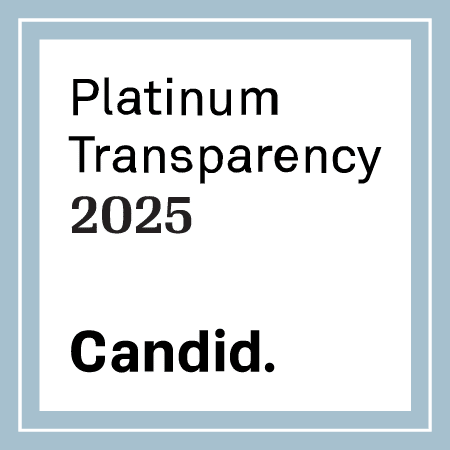Recognizing the Tahirih Justice Center’s leadership role as a national organization that serves BIPOC immigrant survivors of gender-based violence (GBV), this Hispanic Heritage Month Tahirih’s Latine Caucus is reflecting on identity, language, what it means to advance gender justice as Latine people today, and how we want to live out our organizational values starting with centering inclusion through our caucus name.
In the US, we’ve seen a decades long debate within and outside our community on what umbrella term to use to describe people of the Latin American diaspora (Gene Demby, 2021). Today, the most widely used terms are ‘Hispanic’ and ‘Latino,’ but the terms aren’t always the most inclusive. The term Hispanic, for example, defines a group of people whose primary language is Spanish, yet not all people living in Latin America or of Latin American descent speak Spanish. The term ‘Hispanic’ is also widely seen as having a colonial legacy, referring to the colonization of the Americas by the Spaniards. The term ‘Latino’ on the other hand is more inclusive of people from the Americas regardless of the language they speak, like Brazilians, for example, who speak Portuguese (Smith, 2021). Yet the term is also increasingly seen as not being gender inclusive in the way it is grammatically used.
The Spanish language categorizes people in binary terms, male and female, by using the letter ‘o’ and ‘a’ at the end of words and goes so far as to assign gender to inanimate objects. Additionally, Spanish uses masculine pronouns and nouns as universal and the default when describing a group of people, like Latinos. According to a 2018 study done by the World Bank titled ‘Gendered Language,’ Spanish, like many romance languages, stands on one extreme end of the spectrum when it comes to gendered languages (World Bank, 2018).
So, with over 70 percent of Tahirih’s clients coming from Latin America and 37 percent of Tahirih’s staff self-identifying as part of the Latin American diaspora, Latine staff felt it was important last year to reflect on the language and terms we use to refer to our community, especially given our line of work. Specifically, Tahirih’s Latine Caucus is comprised primarily of first- and second-generation immigrants from Latin America, and embody a diverse set of ethnic, racial, national, class, ages, and professional backgrounds. While serving our communities we often navigate what Chicana feminist writer and poet Gloria Anzaldúa called ‘the language of the borderlands,’ where because of our identities we find ourselves at the ‘juncture of cultures, where languages cross- pollinate and are revitalized; they die and are born’ (Anzaldúa, 1987).
Staff within the Latine Caucus have long recognized the complex colonial and gendered roots of the Spanish language. We understand that language is a powerful tool that shapes the way we think, understand and structure the world around us; it’s how we shape culture and build community. Our work with immigrant survivors who have experienced horrific forms of gendered violence in their home countries and in the US has taught us that violence is a continuum, and that gendered language can reinforce harmful stereotypes that have a compounding effect with the other forms of violence and discrimination our clients experience. In fact, in its study the World Bank suggests that gendered language limits gender equality due to the way it shapes and supports rigid gender roles. The World Bank study also notes that there is a negative relationship between gendered languages and women’s educational attainment and economic achievement (World Bank, 2018).
While the long-standing debate in the US continues to try to identify an umbrella term that a multilingual, multi-ethic, multi-racial, multinational community can identify with, Tahirih staff recognize that words have the power to erase or elevate and give value to communities. Working in the anti-violence and anti-oppression space as Latine people requires us to reimagine a new reality. In this sense, Anzaldúa reminds us that it is not enough to ask questions and challenge patriarchal and colonial conventions, but to work towards a new consciousness, one that is constantly shifting ‘out of habitual formations; from convergent thinking, analytical reasoning that tends to use rationality to move toward a single goal (a Western mode), to divergent thinking, characterized by movement away from set pattern sand goals and toward a more whole perspective, one that includes rather than excludes’ (Anzaldúa, 1987).
So, last year as the Latine Caucus reflected on what to call our group, we discussed the way terms used within and outside our community have transformed over time and space and, ultimately, looked at movements across Latin America that have emerged to create a more inclusive language by using the letter ‘e’ to denote gender neutral, non-binary language (Meritxell Freixas Martorell, 2022).
Tahirih’s Latine Caucus is clear that language will continue to transform over time and, as we weave our community’s diverse set of experiences, our collective consciousness will also shift with it. In this moment in time, our staff chose a term that signified a bridge between our multiple worlds, one that aims to advance immigrant justice and racial and ethnic justice alongside gender justice as we build a more inclusive society.
References
- Anzaldúa, Gloria (1987) ‘Borderlands: The New Mestiza= La Frontera.’ Aunt Lute Book Company.
- Demby, G (2021-present) ‘Who are you calling Hispanic?’ Code Switch [Audio podcast]. National Public Radio. https://www.npr.org/2021/09/20/1039053932/who-you-calling-hispanic
- Freixas Martorell, M. (2022) “La Juventud de America Latina apuesta por el lenguaje inclusivo y no binario.’ Retrieved from: https://eldiariodelaeducacion.com/2022/11/07/la-juventud-de-america-latina-apuesta-por-el-lenguaje-inclusivo-y-no-binario/
- Jakiela, P., & Ozier, O. (2018) Gendered Language, Article 8464. Retrieved from: https://documents1.worldbank.org/curated/es/405621528167411253/pdf/WPS8464.pdf
- Smith, K (2021) ‘Latinx vs. Hispanic: A History of Terms,’ Facing History and Ourselves. Retrieved from: https://www.facinghistory.org/ideas-week/latinx-vs-hispanic-history-terms


